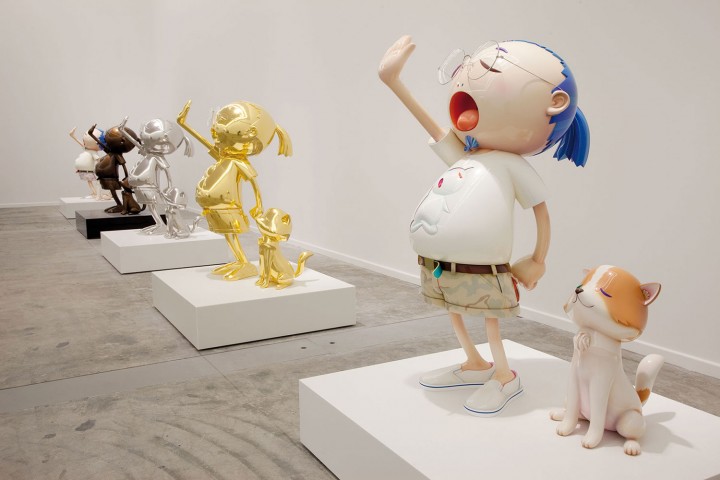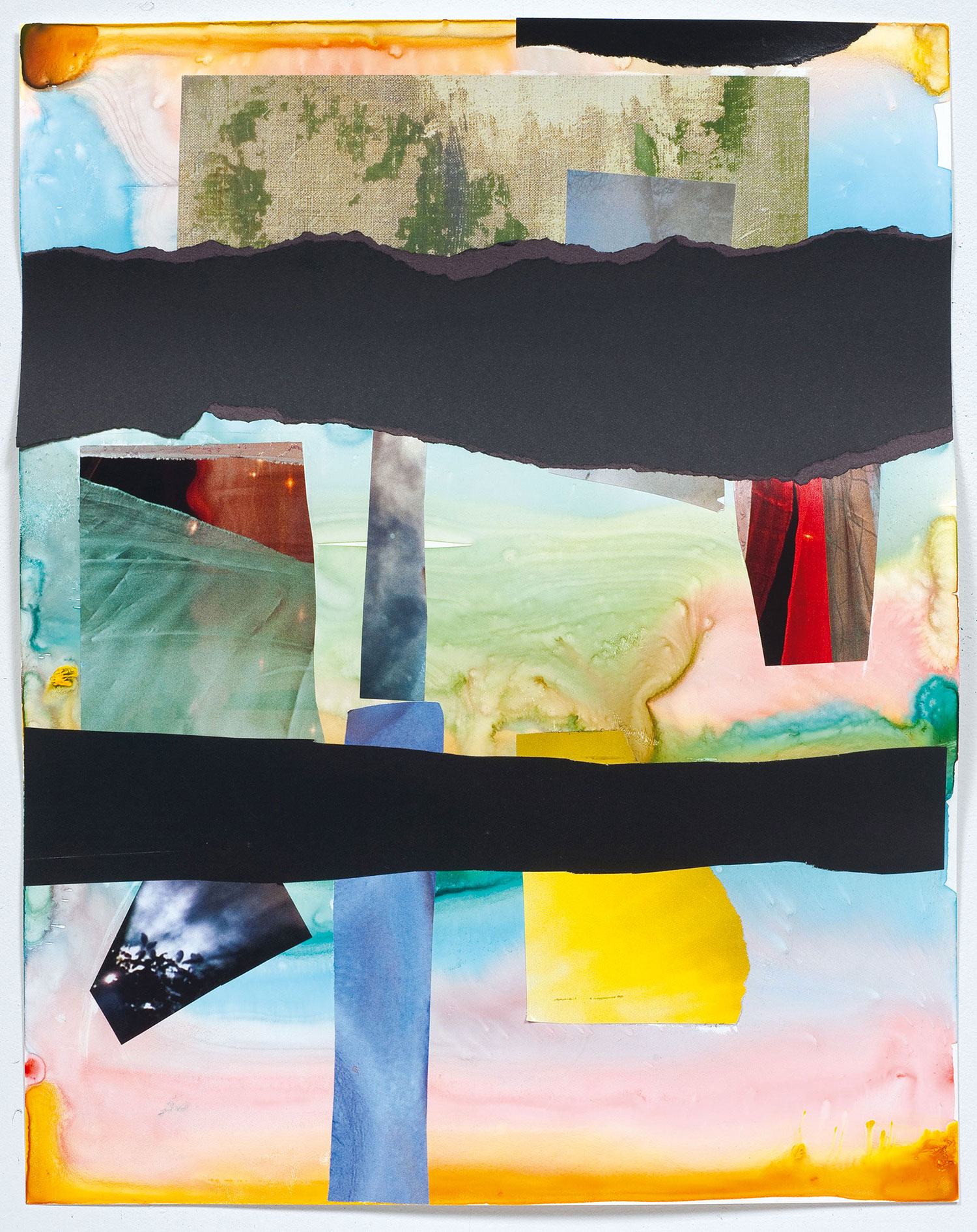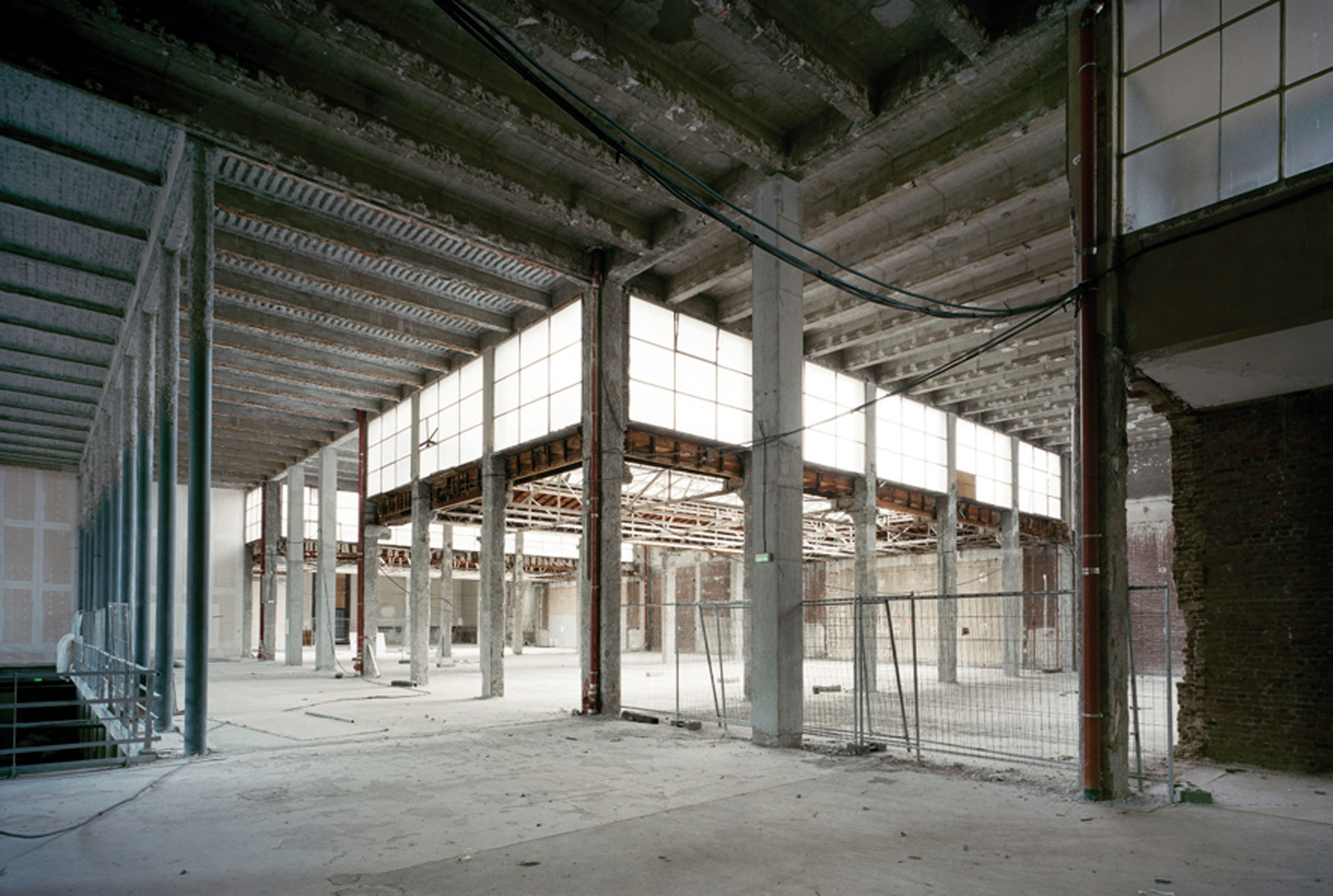
Massimiliano Gioni: Let’s start with the title of the exhibition: “Murakami – Ego.”
Takashi Murakami: “Murakami – Ego” is a self-portrait. For a long time, I have been making a portrait of Japan, the picture of a culture. Today that picture has exploded. “Murakami – Ego” is the portrait of my many identities. People seem to really need a depiction of the artist’s face. That’s why I started making self-portraits. When I was a student in Japan, a big influence came from one German painter — Horst Janssen. He was pretty much a local artist, very humble, quite unknown. But he was shown in Japan and I was very interested in his self-portraits; I learned a lot from them. Just the other day I bought this photo of Steve Jobs and when I hung it on the wall, I thought, “Oh, this is great!” In art history, when you know that people are dead, looking at their face is really incredible.
MG: So what would a self-portrait of yours look like?
TM: I only understand the surface, and that’s why I am focusing on it. The surface is my work and my starting position: that’s what I paint and that’s why I have no ego. I am a kind of B-movie maker. I know very well that I’m not getting an Oscar. That’s where I start from. Sometimes this attitude can mislead the critics. And sometimes these misreadings can be productive. A very good example is Steven Spielberg, a kind of B-movie director, but who can make incredible movies. He has a very strong desire for quality; he makes great special effects, can have a major impact on the industry and knows how to make use of marketing strategies — just like George Lucas. They are great inspirations for me. I’m very honest and I don’t want to compromise the quality of my work; just like a movie director, I need to find money and resources to keep the quality at the highest level. And that’s why I need to come up with new marketing ideas.
MG: You have always been quite open — some might even say shameless — about connecting your work to the fashion and entertainment industry.
TM: In the art world, critics always connect entertainment with guilt and superficiality. I think my work is the answer to that criticism. And its popularity perhaps is also a sign that things are much more complicated than the way certain critics see it. Which doesn’t mean that I only want my public to have fun. It’s more complex than that. You could say that my paintings are like buildings: on the surface they appear very light and flimsy, but they’re actually made of very solid materials underneath. The depth is visual.
MG: And not many people are aware of the amount of research that goes into your projects. You have a PhD in art history, and throughout your career you have also realized some very ambitious curatorial projects such as “Little Boy” and “Superflat,” which attempted to write a new canon for art history in Japan.
TM: History for me is very important. And not only Japanese art history. When I started my career I was very interested in Abstract Expressionism. I spent days trying to figure out the visual structure that underlies that kind of work. There is a hidden system that makes certain paintings visually interesting. In many of my paintings I have tried to integrate the language of Abstract Expressionism, working below the surface, giving it new depth.
MG: But you have always been quite critical of America’s influence on Japanese culture, haven’t you?
TM: I’m obsessed with the way that, after World War II, Japan has been under a tremendous influence from the United States. As a result, Japanese governments can never survive long-term. Our prime ministers have to be good puppets. It’s not even America’s fault: it is Japan that needs to learn how to make certain decisions.
In a way the word “Ego” in the title of this show is more about my country than about a personal question. It has been a particularly complicated time for Japan. And the distance between the individual and society has become thinner. At the moment I still feel like we don’t have independence, we don’t have a framework for the nation. You can see it in the market too. Why does Japan not have an art market? In China it’s possible to create a big market, like in the United States or France.
The West has a history of thinking about art and the market. Coming from Japan, my position is much more complicated. I could not survive in Japan, so that’s why I first had to move to New York — the capital of the art market and of the art everything. Things turned out well, I was lucky, and ever since I have been trying to learn how to exist within the market and the museum and the critical industry. I am still trying to learn how they operate.

MG: Let’s go back to the exhibition, which is the first large-scale show by an international artist in Qatar, a country that is putting an incredible amount of energy into contemporary art. These days in Doha, one can visit your show, an exhibition of works by Louise Bourgeois, a solo show by Cai Guo-Qiang and a new gigantic sculpture by Richard Serra — besides the beautiful Museum of Islamic Art. Did the city of Doha play an important part in the exhibition itself?
TM: I was very impressed by Doha. When I came to Qatar the first time, Doha was great, a kind of super-artificial city. A sci-fi city in the desert. I was also very interested in understanding the reasons why Qatar feels it’s important to exhibit contemporary art. In a way, it’s the same reason why after World War II the Japanese people really wanted to build museums — they wanted to leave their mark on culture. Of course here things are very different. After the war Japan was very poor, and the situation is difficult again. In Qatar, instead, the cities seem super-rich. That’s why I am focusing more on this artificial feeling.
It was very difficult to relate this exhibition to the usual Western art audience. Instead I was trying to understand what the Qatari audience would be interested in seeing. So I started to fantasize about a crossover between Western culture, the Middle East and Asia. And I wanted to compete with this sci-fi city that is outside the museum. That’s why I thought of the exhibition as a kind of gigantic amusement park. That’s why the show is very dramatic. I made new LED pedestals for the sculptures, so they glow in the darkened main hall. And I made this hundred-meter-long painting, which is very emotional, but also amusing in a way. This time I felt it was important to be more artificial, “super-natural.”
MG: At the center of the exhibition there is also a circus tent, which functions as an indoor cinema installed right in the middle of the show. This time you are working almost on an urban scale. It’s like you’re building your own city…
TM: Actually the idea of the tent comes from Art Basel where there is a zoo right next to the fair. And the circus is inside this beautiful tent, very old fashioned. I often thought the tent is so much better than a lot of the art, so at one point I started thinking I wanted to make a tent. The Al Riwaq Exhibition Hall in Doha is a vast space, and it’s hard to dominate, so the tent strangely fits in. It’s out of place, but it’s a good contrast.
MG: The very center of the exhibition is this new hundred-meter-long painting, in which you have pushed your technique much further. It’s very expressionistic and more personal, more human I would say.
TM: The hundred-meter painting (The 500 Arhats, 2012) was conceived after 3/11 — the Japanese earthquake in 2011. In the old days when there was a disaster, the monks had paintings made and they used them to promote religion among the people who were suffering. I consider the hundred-meter painting an equivalent to those historical works. It’s a consolatory painting and a way for me to understand my place in nature and in history. From early on in my career, I felt that the greatest moments in art history are the ones in which people really need images, when they really need art. The greatest period in Japanese art history was six hundred years ago, when Japan was divided by many wars and torn by earthquakes and tsunamis. A very dark moment but a splendid time for art. It was also the time when many religions came into being in Japan; that’s when our version of Buddhism was finally formalized. It’s as though religion and a certain kind of art were intimately connected. I feel that after the earthquake we are witnessing a return to religion, which to me seems like a return to the atmosphere of Japan six hundred years ago. I felt it was important to create a picture that could incarnate those spiritual tensions and desires.

MG: How do you work on a piece like that?
TM: I have always tried to learn from historical paintings. For this project, we built a research team focusing on the tradition of the “500 monks” paintings and to learn about this type of painting as a means to deal with a tragedy, with a catastrophe. As the research team continues to work, I start making sketches and asking the crew for their ideas and they start making sketches too. So we look at approximately 1000 sketches, and usually at first I don’t like anything. So we continue the discussions and develop new drawings. After one month, I finally got an idea I liked. Ping! I don’t know why. This work was very experimental, more free-form than my previous works. We had no time to follow the usual system. We had to attack the canvas directly. It felt like going back to my student years, when I was making abstract paintings. Still, these new works are big collaborative machines, realized with a big army of painters. More than 200 people have worked on these paintings; the studio was open 24-7; people slept at the studio; we had two shifts constantly working. I even expanded my studio to make room for these gigantic paintings. I had to rebuild the studio completely, so we could work on fifty-meter sections at a time.
MG: You have always been very opposed to atomic energy. In a sense this new painting is a form of political protest.
TM: During the earthquake and the tsunami 20,000 people were killed. The Japanese people were truly shocked. We knew already that sooner or later an earthquake would be coming, but the reality is that we were very shocked. So Japanese people had to reconsider their beliefs and their philosophy of life. The phrase “Shogyo mujo” is a Buddhist concept that means something like “Everything is transient”: in the end, everyone will die. And that’s why you shouldn’t worry.
The expression “Shogyo mujo” is very important in Japanese culture. In school, the teachers repeat that expression over and over again. But no one genuinely understands it. After these disasters, people finally understood it in all its brutality. My hundred-meter painting came from this kind of acceptance. Now when we’re using this expression “Shogyo mujo,” it’s like when we see the sunset. We say, “Oh, this is beautiful,” but we are at the same time fully aware of its fleeting nature — we are reminded that it will disappear and that we will die. We will be done, finished. We didn’t really know where this concept came from, but now we understand what it really means and the very function of art probably has to change to deal with those emotions.





